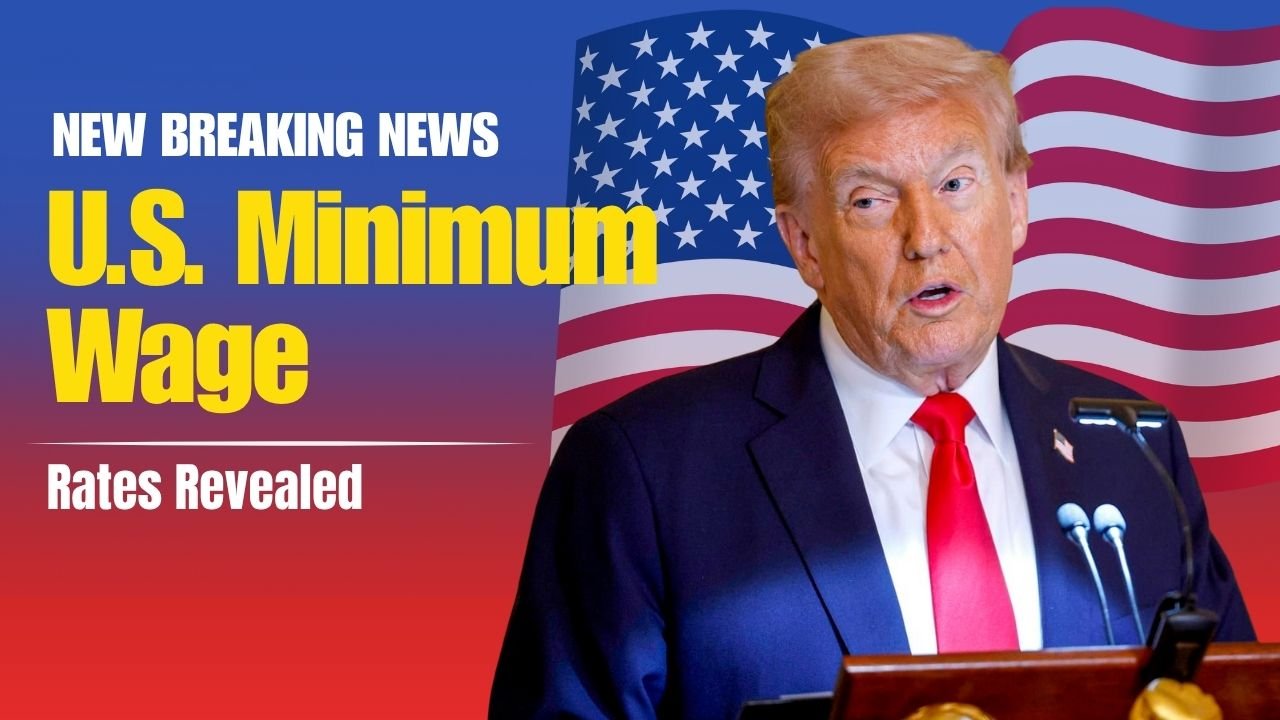The federal wage floor under the Fair Labor Standards Act (FLSA) has remained untouched since July 2009, with the minimum wage still at $7.25 per hour. Despite multiple legislative efforts—including a promise from Joe Biden—Congress has not advanced a nationwide wage hike. Over the years, inflation has climbed nearly 40 percent, effectively reducing the spending power of the federal minimum to roughly $5.25 in 2025 dollars.
More Than 20 States Boost Wages on January 1 2025
According to reports from the U.S. Department of Labor, more than twenty states implemented higher minimum wages from January 1 2025, with additional states planning mid-year starts. These increases aim to offset climbing housing expenses, inflation, and broader cost of living pressures. Some of the largest wage floors are found in states like District of Columbia, Washington (state) and California, while many Southern states continue to adhere to the federal baseline.
State-by-State: Who’s Leading the Wage Reform?
Here’s a snapshot of how jurisdictions stack up in 2025:
| State / Jurisdiction | 2025 Minimum Wage (per hour) | Notes |
|---|---|---|
| District of Columbia | $17.50 (rising to $18.00 in July) | Top-rate in the U.S. |
| Washington | $16.66 | Adjusted annually for inflation |
| California | $16.50 | Uniform state-wide rate |
| New York | $16.00 ($16.50 in NYC/Long Island) | Variation within state |
| Connecticut | $16.35 | Indexed to cost of living |
| Massachusetts | $15.00 | Rate unchanged since 2023 |
| Colorado | $14.81 | Adjusted via CPI |
| Arizona | $14.70 | Inflation-indexed |
| Oregon | $14.70 | Regional tiers apply |
| Florida | $13.00 | Rising toward $15 by 2026 |
| Illinois | $15.00 | State-wide standard |
| Texas | $7.25 | Matches federal baseline |
These numbers illustrate a clear regional divide: western and northeastern states tend to lead in wage hikes, while many southern jurisdictions remain at the federal level.
City and Local Wage Policies: Going Beyond State Minimums
In addition to state-level reforms, many cities and counties are choosing to set even higher local minimum wages tailored to their living-cost realities. For instance:
- Seattle (Washington) enforces nearly $20 per hour depending on employer size.
- San Francisco mandates a minimum wage of $18.07 per hour.
- In New York City, the local minimum stands at $16.50 per hour, slightly above the statewide figure.
Because of this patchwork of laws, two workers holding similar jobs can earn vastly different amounts depending on their city and state. While this local autonomy helps wages align with local costs, labour economists warn it may also affect regional business competitiveness and further underscore the need for federal reform.
The Raise the Wage Act of 2025: A Push for Federal Uniformity
The Raise the Wage Act proposes to raise the federal minimum wage gradually to $17 per hour by 2030, while also ending the tipped-wage system (currently as low as $2.13 per hour before tips) and eliminating sub-minimum wages for workers with disabilities. If passed, the law would raise incomes for millions, bring uniformity, and tie future increases to inflation. However, small-business groups express concern that such increases could raise costs, limit hiring, or drive automation. As of early 2025, the bill remains under review in Congress, with support dividing largely along party lines.
Why Raising the Minimum Wage Matters
Economists and labour specialists highlight several benefits of raising the minimum wage:
- Reduced poverty: Higher wages help families cover basic needs and reduce dependence on welfare.
- Stronger consumer demand: With more disposable income, workers spend more, spurring economic activity.
- Improved employee retention: Businesses often see less turnover and benefit from a more motivated workforce.
- Increased tax revenue: Higher earnings boost tax contributions, financing public services.
Challenges for Employers and Small Businesses
Despite its advantages, raising the wage floor can pose difficulties—especially for small and medium enterprises (SMEs) in sectors such as retail, hospitality, and food service. Common concerns include:
- Slower hiring or recruitment freezes.
- Greater reliance on automation to reduce labour costs.
- Price increases as companies pass on higher payroll costs to consumers.
Policymakers must strike a balance between providing fair wages and maintaining business viability.
Looking Ahead: Wage Projections for 2026 and Beyond
Many states already have scheduled future increases:
- Florida aims to reach $15.00 by 2026 via annual increments.
- Hawaii targets $18.00 by 2028.
- California and New York plan continued inflation-linked adjustments.
- Washington D.C. will exceed $18.00+, tied to the CPI.
This trajectory shows that—even in absence of federal reform—the nation is moving toward higher minimum wage standards, especially in high-cost regions.
Conclusion
Although the federal minimum wage remains stuck at $7.25 per hour, a broad range of states and local governments are actively raising their wage floors in 2025 to address inflation and the rising cost of living. With some cities implementing rates well above state levels, regional wage disparities are widening. At the same time, the Raise the Wage Act of 2025 signals potential federal reform, though it faces debate and uncertainty. For workers, these developments mean higher incomes in many places—but for businesses and policymakers, they underscore the delicate balance between fairness and economic sustainability.
FAQs
What is the current federal minimum wage in the U.S.?
The federal minimum wage remains $7.25 per hour, unchanged since July 2009.
Which states have the highest minimum wage in 2025?
In 2025, the highest minimum wage is in Washington D.C. at $17.50 (rising to $18.00 in July). Other leading jurisdictions include Washington ($16.66) and California ($16.50).
What would the Raise the Wage Act of 2025 do?
The Act proposes to raise the federal minimum wage to $17 per hour by 2030, eliminate the tipped wage system, and index future increases to inflation.
